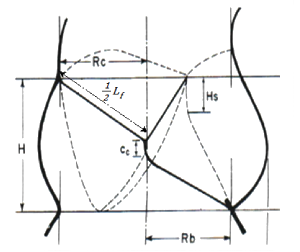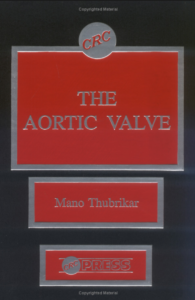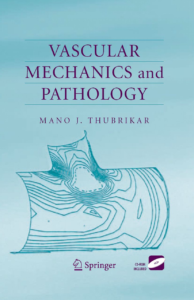A Remarkable Discovery
Nature designed the optimal valve.

Dr. Mano Thubrikar and his team in the Department of Surgery at the University of Virginia hypothesized that there is an underlying universal principle that governs the design of the natural aortic valve. They studied valve design, established certain performance criteria, and determined the design parameters that satisfy those criteria. In other words, they constructed a theoretical “optimal valve.”
For a valve to have optimum performance, they determined it must satisfy the following 4 criteria:
(i) A specific coaptation height (to prevent leaks),
(ii) No folds in the leaflets (to eliminate stresses due to folding),
(iii) Minimum overall height (to reduce dead space), and
(iv) Minimum leaflet flexion (to reduce flexion stresses).
The design parameters of the optimal valve were defined as follows:
Rb = radius of the bases,
Rc = radius of the commissures,
H = valve height,
Lf = length of the leaflet free edge,
Hs = commissural height, and
Cc = coaptation height.
Geometric relationships were then developed between the design parameters and the performance criteria. The resulting solution was the geometry of the theoretical optimal valve. In fact, the design parameters turned out to be narrowly defined; a small change in any one of them meant the valve was no longer optimal.
Upon comparison, they discovered that the natural aortic valve and the theoretical optimal valve share a similar geometry. This demonstrated that the natural aortic valve has the geometry necessary for optimum performance.
Dr. Thubrikar designed the Optimum TAV to have the same ideal geometry as the natural aortic valve. As a result, it exhibits optimal leaflet dynamics and maximum hemodynamic performance. Optimum TAV is “Nature’s Valve by Design.”
For over 30 years, Dr. Mano Thubrikar has been a leading authority on the aortic valve.


Dr. Thubrikar authored 2 of the leading textbooks in cardiovascular studies: The Aortic Valve and Vascular Mechanics and Pathology. The Aortic Valve is the only book in the world specifically detailing the geometry, tissue, dynamics, flow, and mechanics of the aortic valve. Published in 1990, it remains an indispensable guide to those designing bioprosthetic heart valves.
Dr. Thubrikar founded Thubrikar Aortic Valve in 2010. Prior to that, he served as Director of the Biomedical Engineering Program and Professor of Mechanical Engineering at the South Dakota School of Mines and Technology (2007-2010). Previously, Dr. Thubrikar served as Edwards Distinguished Research Scientist at Edwards Lifesciences (2004-2007); as Director of Biomedical Engineering at the Heineman Medical Research Center at Carolina’s Medical Center with a joint appointment at the University of North Carolina (1991-2004); and as Director of Surgical Research in the Department of Surgery at the University of Virginia Health Sciences Center (1975-1991).
He has also authored over 100 publications and numerous book chapters on cardiac pathophysiology and devices, and is a Fellow of the American Heart Association (AHA). Dr. Thubrikar served on the editorial advisory boards of several prestigious journals and has been a consultant to many multinational, cardiovascular device companies.
Dr. Thubrikar has received research support from the National Institutes of Health (NIH), the AHA, and the private sector, and has served as a reviewer for research grants at the NIH, the AHA, and the National Science Foundation. He has been an invited speaker at several international symposiums.
Dr. Thubrikar holds a Ph.D. in Biomedical Engineering and an M.S. in Materials Science Engineering from New York University, and a B.E. in Metallurgical Engineering from Nagpur University, India.
